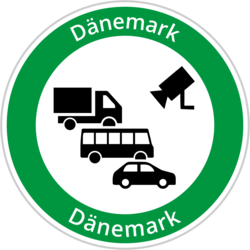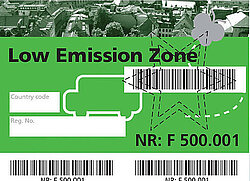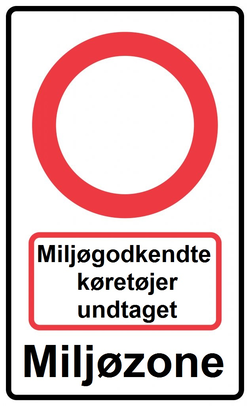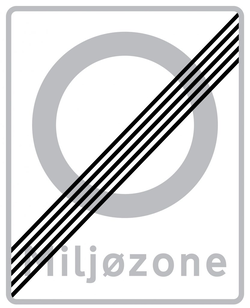Important!
Aarhus is one of 4 low emission zones in Denmark: Aalborg, Aarhus, Copenhagen, Odense
Effective since:
01.09.2010
Type of zone:
permanently valid, 24 h a day, 365 days a year
Area/extension of the zone:
The low emission zone is located on the Aarhus Bay of the Kattegat, which is to the east of the city and the low emission zone. The low emission zone is then essentially enclosed by the Ring Road 1 in a southern, western and northern direction. Traffic to Denmark's largest container terminal via the B 1 is not part of the zone.
Fines:
1700 €
Stickers / registration necessary ?
yes, Registration Denmark
Affected vehicles and driving bans:
Diesel vehicles: minibus (M2), coach (M3), van (N1), truck (N2), heavy truck (N3)
Vans under 3.5 t must have at least one initial registration from 01.01.2007 (Euro 4).
Buses and trucks must have at least one initial registration from 01.10.2009 (Euro 5).
Every vehicle from the above-mentioned date is automatically registered and the comparison is made with the central vehicle register in the respective country.
If a van was registered before 2007 or bus/truck before October 2009 and has a corresponding fine particle filter (PM), the registration must be carried out manually.
Exceptions:
Doctor, disabled vehicle, fire brigade, ambulance, military, vintage cars older than 30 years, police
Aarhus
Do I need stickers or registrations?
Since 01 July 2020, every vehicle concerned requires a valid Registration Denmark to enter the low emission zone. Otherwise, a fine of up to 1,700 euros is to be expected. Before 01.07.2020 the EcoSticker was still mandatory.
How do I recognize the low emission zone?
The beginning and end of the environmental zones are marked with signs. This shows a red circle as a prohibition sign with the exception of "environmentally friendly vehicles". The word "environmental zone" is still written at the bottom. Who exactly is allowed to enter or not is not indicated by the entry sign.
In our Green-Zones app we have a detailed map of each low emission zone. So you can easily recognize the borders and avoid penalties.
Are there other environmental zones in Denmark?
There are 4 low emission zones in Denmark: Aalborg, Aarhus, Copenhagen, Odense
In our Green Zones App we have gathered together all the low emission zones in Europe and presented them clearly.
Good to know...
All current driving bans and further information are available in our Green-Zones App.
Are night-time environmental zones coming?
The Berlin Green Party recently presented a proposal to equalise the traffic congestion in the capital. The idea is to shift delivery and commercial traffic to the night-time hours. According to Antje Kapek, transport spokesperson for the Greens, this proposal should help to ensure that delivery vehicles, refuse collection, care services and doctors get stuck less in congested and parked-up streets during the day. Low-noise and low-emission lorries could increasingly drive into cities at night and on special routes.
Bicycle instead of car - Paris in transition
A study by a public foundation has shown that more than one in ten journeys in Paris and the surrounding area are made by bicycle. This is a remarkable increase compared to 14 years ago, when less than one in thirty journeys were made by bike. Paris seems to have been endeavouring to change its transport policy for years. With more cycle paths and cycle lanes, fewer car parks and higher parking charges, the city is trying to promote cycling and reduce car traffic. But what does this mean for the existing low emission zone?





![[Translate to Englisch:]](https://www.ecosticker.dk/fileadmin/_processed_/8/3/csm_screenshot_2024-04-18_125614_c7d9eca4a5.png)
![[Translate to Englisch:]](https://www.ecosticker.dk/fileadmin/_processed_/2/0/csm_screenshot_2024-04-18_121908_5e1053efaf.png)